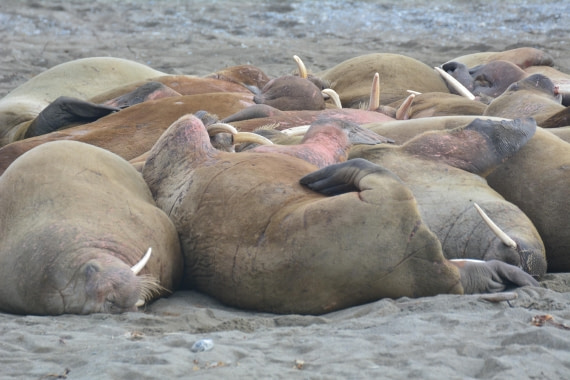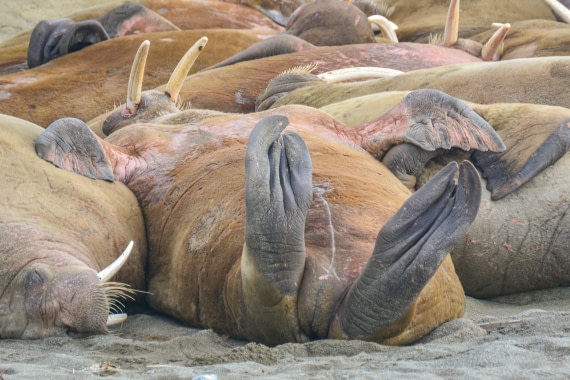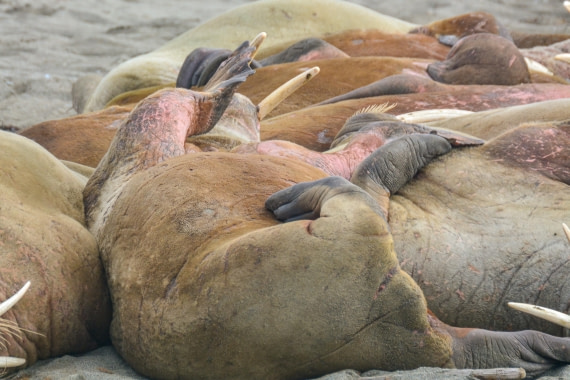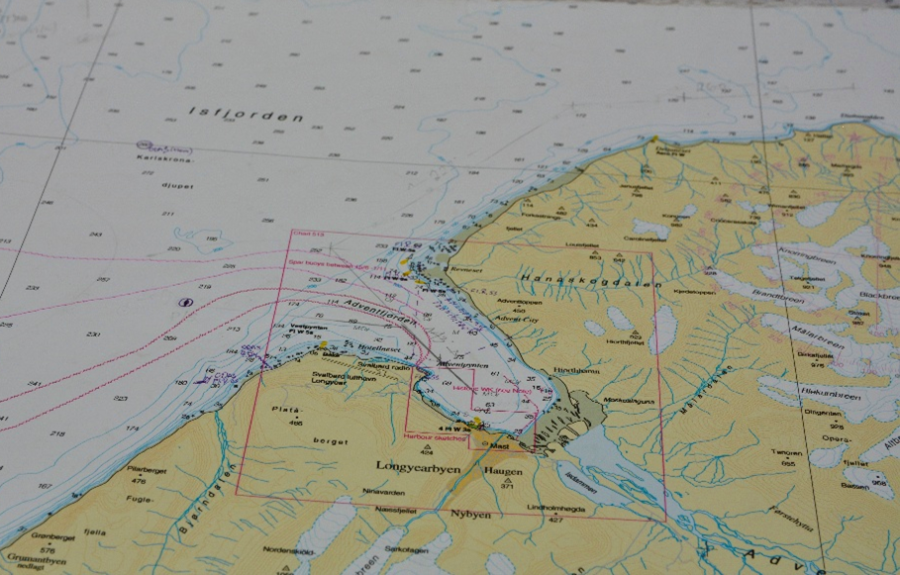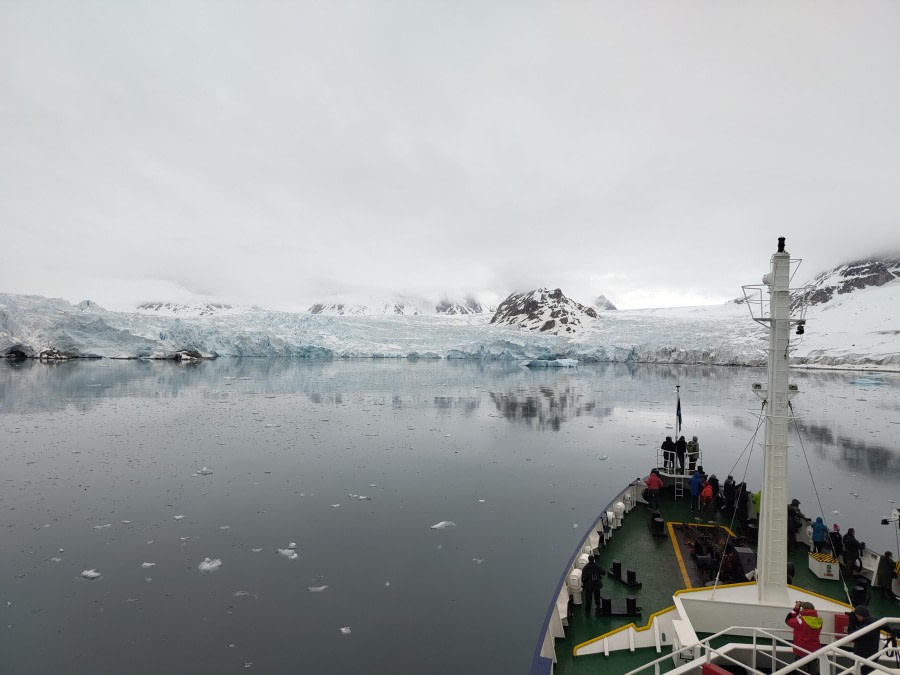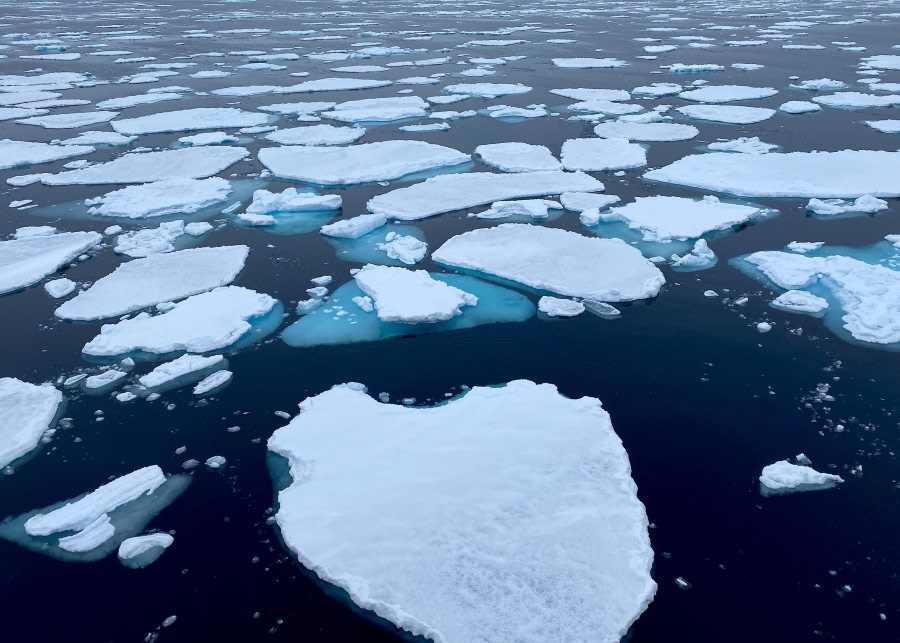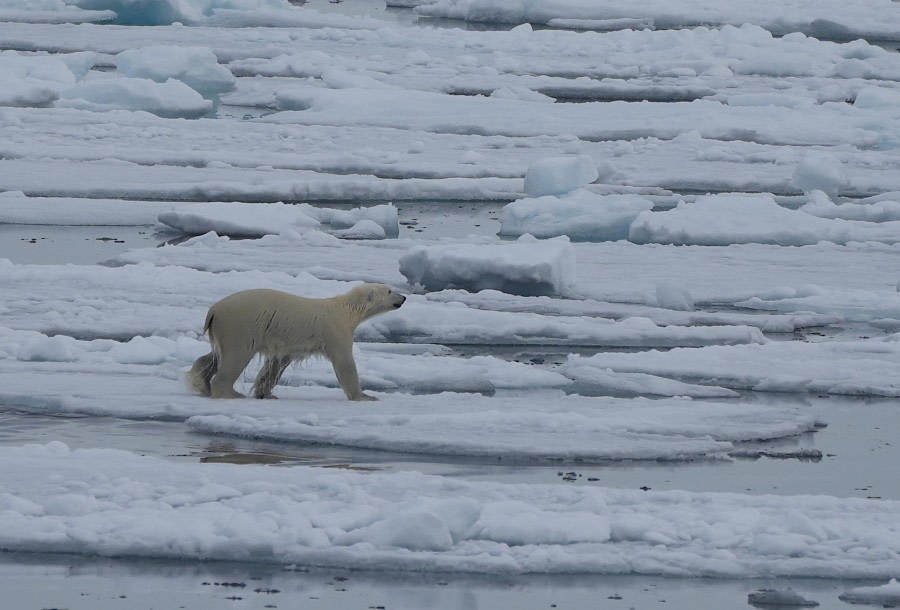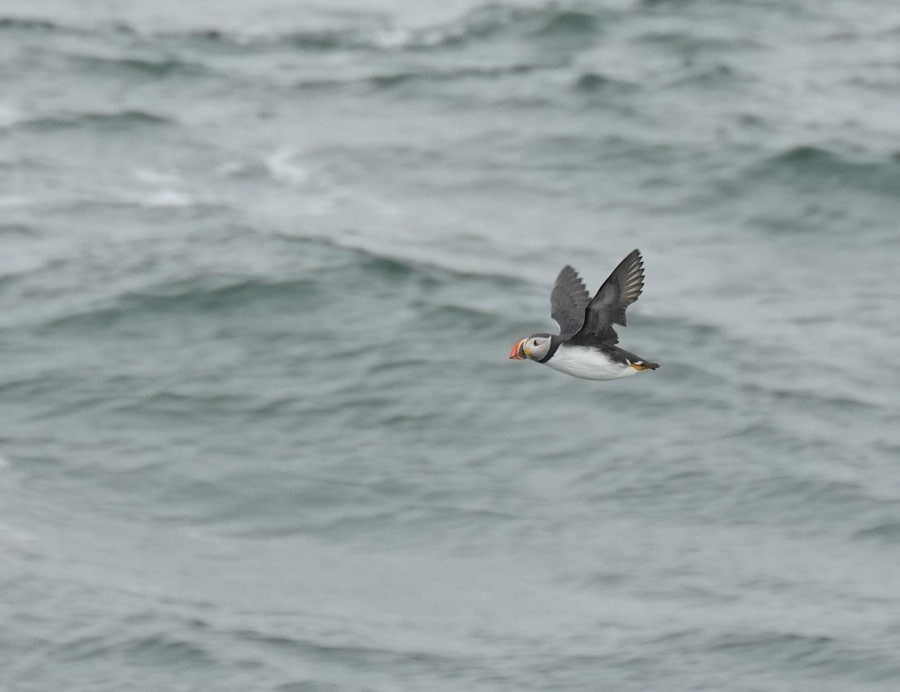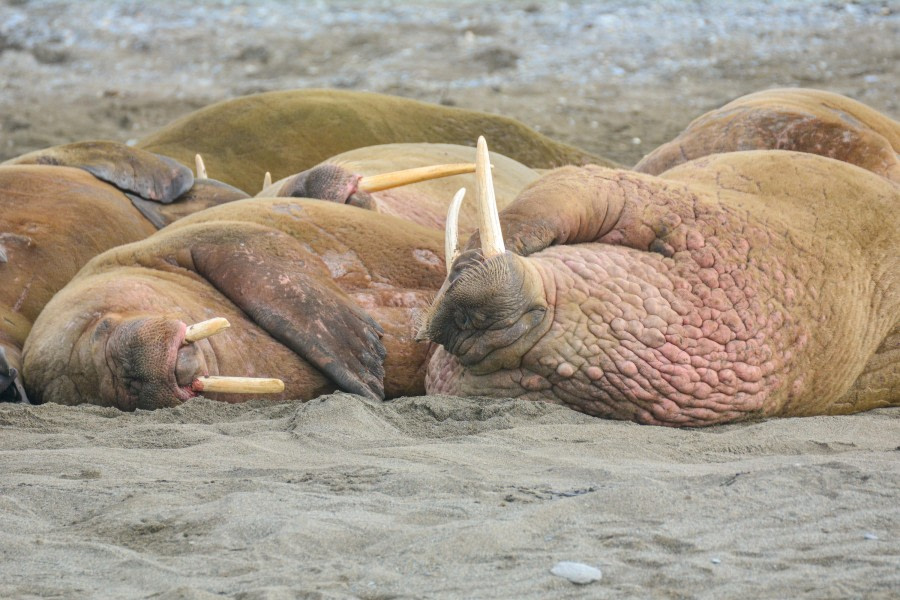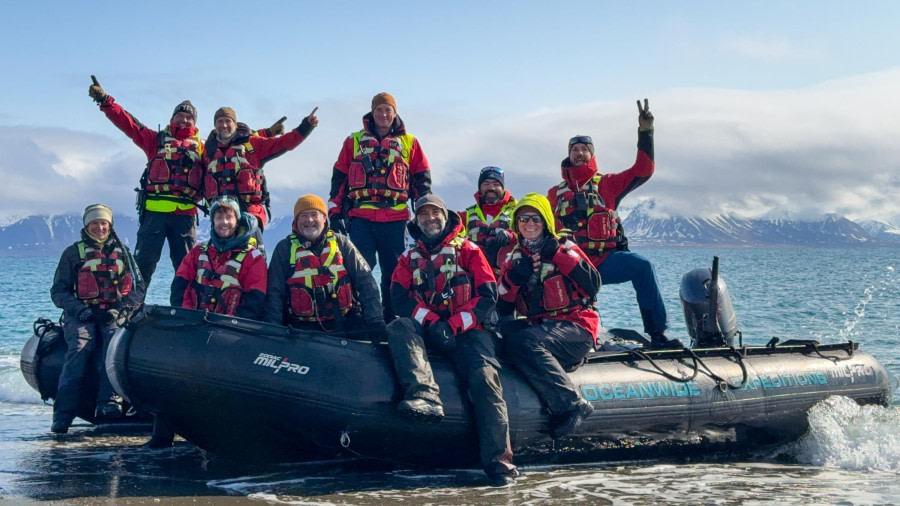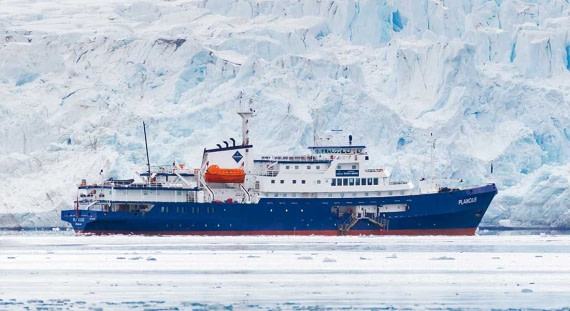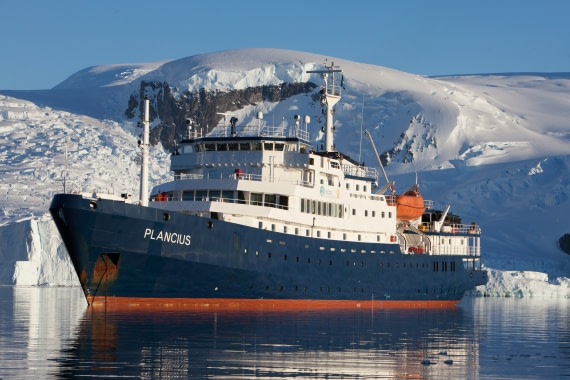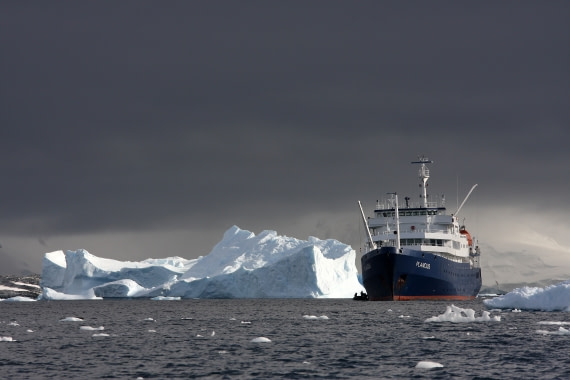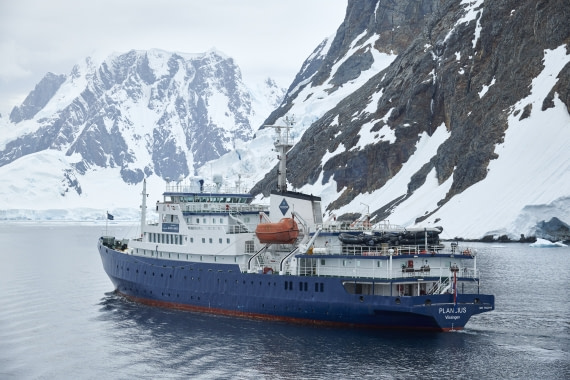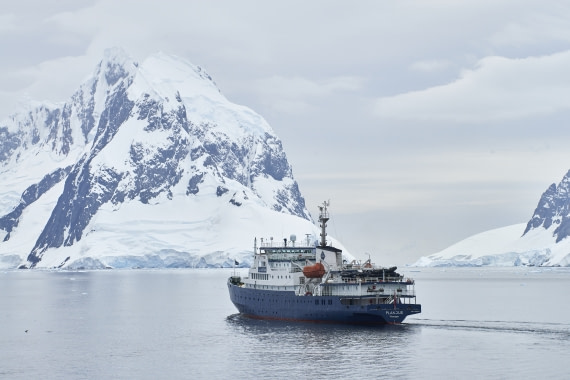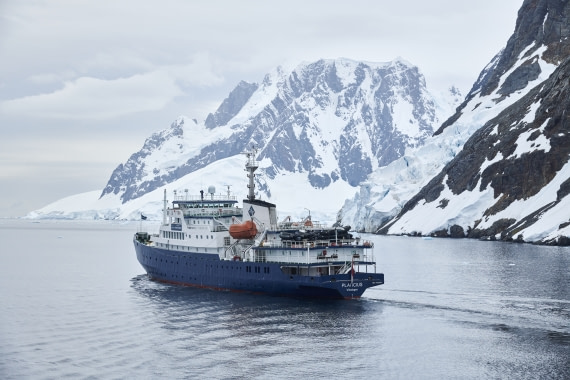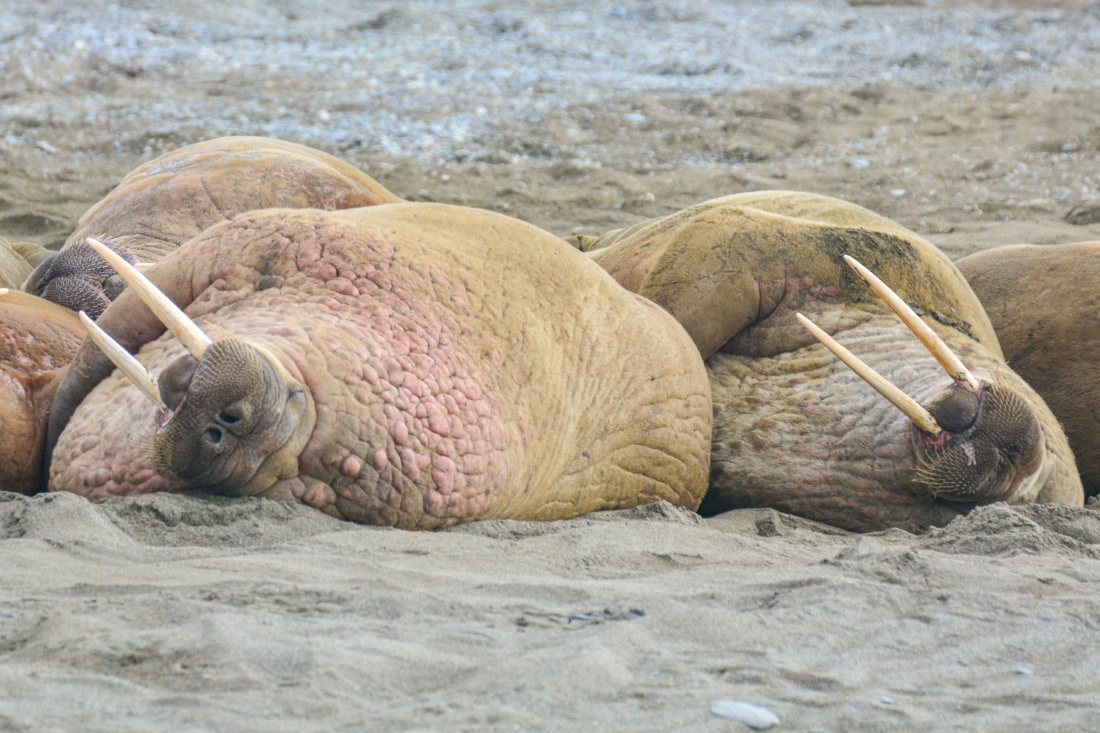| Date: |
11.06.2025 |
| Position: |
79°39.3’N / 011°16.1’E |
| Wind: |
WNW2 |
| Weather: |
Overcast |
| Air Temperature: |
+3 |
Our first full day of expedition cruising in the Arctic! And what a beautiful scene to greet us – nice sea and spectacular, snow-covered mountains of the North-West coast of Spitsbergen on our starboard side. We soaked it all in before heading for breakfast, after which we gathered in the lounge to receive our mandatory for zodiac and polar bear safety. Both are absolutely essential and as we listened carefully it became clear, if we hadn’t realised fully before, just why they call this expedition cruising. We were truly in the Arctic and it’s not a theme park!
After this we were able to relax whilst Plancius transported us into Smeerenburgfjorden. As we turned into the fjord from the open sea a fabulous vista opened out in front of us. Beautiful ice bound jagged peaks on either side and, at the far end, the majestic glacier itself. We slowly made our way in with everyone out on deck, taking the scenery and wildlife. In the water we spotted Brunnich’s and Black Guillemots, Common Eider and a few Atlantic Puffins, joined by a curious Harp Seal. Arctic Skuas were seen chasing a poor Black-legged Kittiwake, trying to steal the food that had just been swallowed. In the distance, while observing the crevassed 3-km wide terminus of Smeerengburgbreen a small pod of Belugas were visible to the trained eyes. It was a quiet yet magical moment, witnessing these elusive whales in their icy habitat.
We then sailed through the channel to Smeerengburg itself, an old whaling station on the end of spit of land. Several centuries ago it was a hive of activity with up to 300 men working there during the arctic summer, catching whales and walrus and rendering the carcasses to extract the oil from the blubber, which was then distributed, sold and widely used in western Europe.
We dragged ourselves and went down to an excellent lunch whilst we sailed to our afternoon of destination.
We dropped anchor off the coast of a small island in the northwest of Svalbard: Ytre Norskøya. The afternoon was calm and the anticipation high as we prepared to set foot on this historic and remote outpost used for centuries by whalers to spot whale blows.
Following a briefing from Jan, we disembarked and met up with the expedition team onshore. The group split into three: the "Contemplators" stayed low to explore the coastal areas at a slower pace, while the other two groups ascended a scenic hill on the eastern side of the island. The view from there was truly spectacular—sweeping Arctic landscapes as far as the eye could see. Michelle shared fascinating insights into the local vegetation, while Marco offered a geological perspective on the land beneath our feet.
Some of us pushed further uphill with Michelle, Koen, Marco, and Mark, eventually reaching the island's summit at 150 meters above sea level. Meanwhile, others followed Christophe to get a closer look at the thriving colonies of Little Auks and Atlantic Puffins. Remarkably, this site is home to the northernmost known breeding population of Atlantic Puffins—an extraordinary wildlife highlight.
As if the day needed anything more, we were lucky enough to be visited by a curious Arctic fox, much to the delight of the hikers.
Back on board Plancius, we enjoyed another superb dinner, followed by the daily recap in the observation lounge with Jan and the expedition team. Afterwards, the ship gently cruised into the scenic Raudfjorden, bathed in the soft light of the Arctic evening. A good night’s rest awaits, as we look forward to another day of adventure in the unforgettable wilderness of Svalbard.


